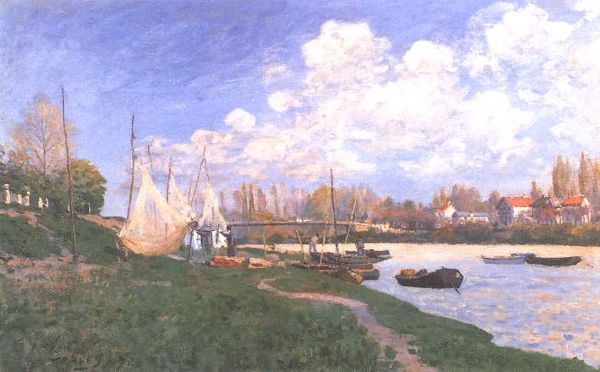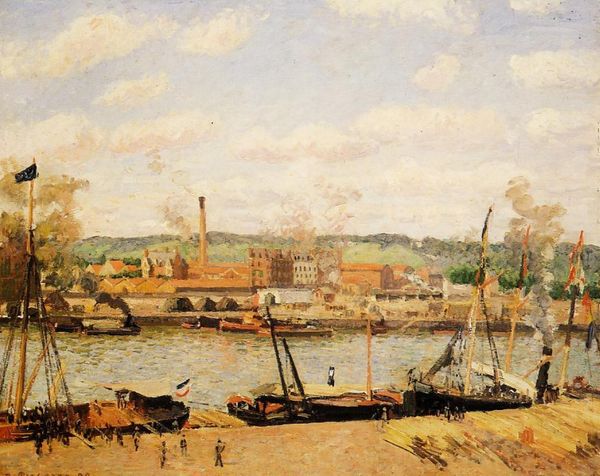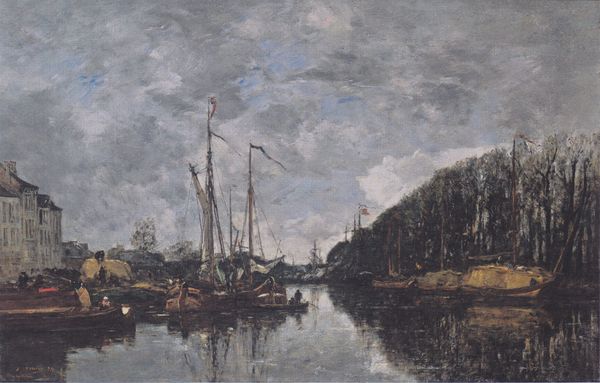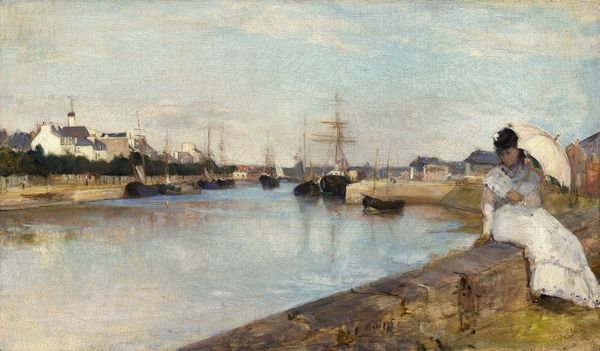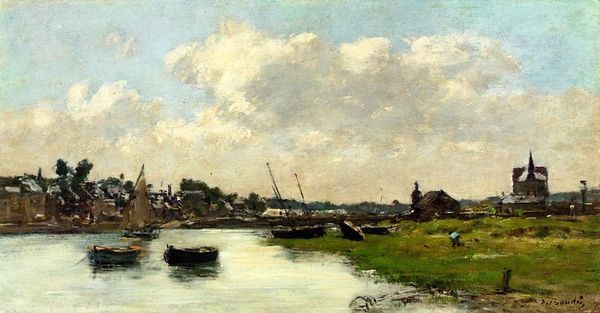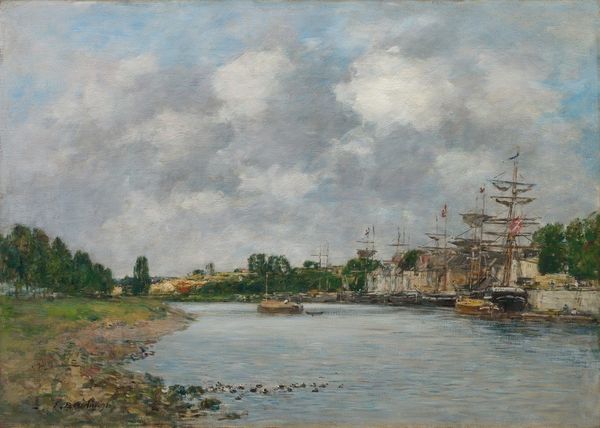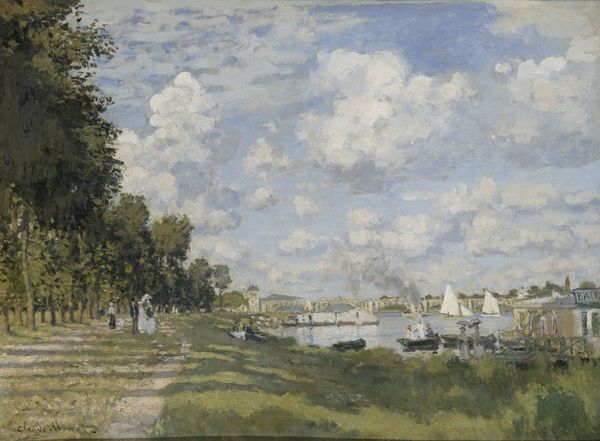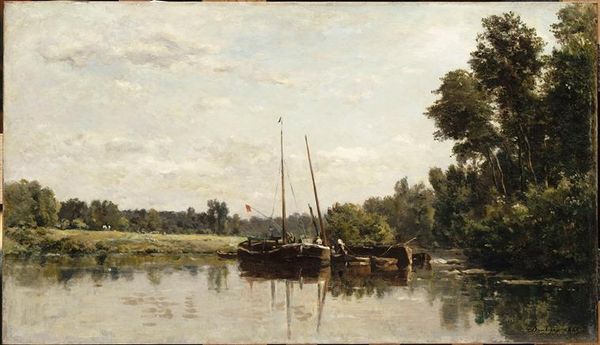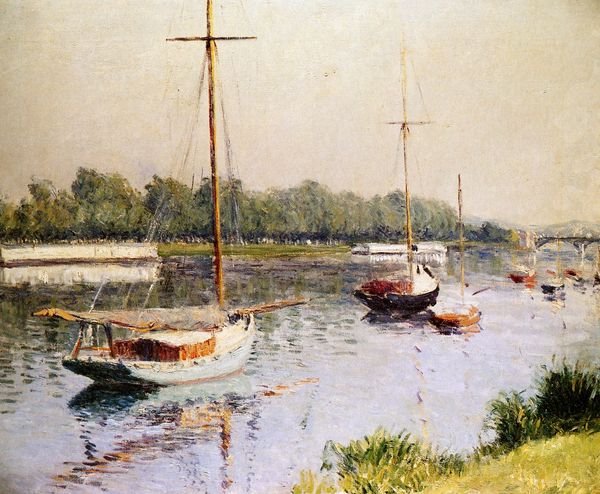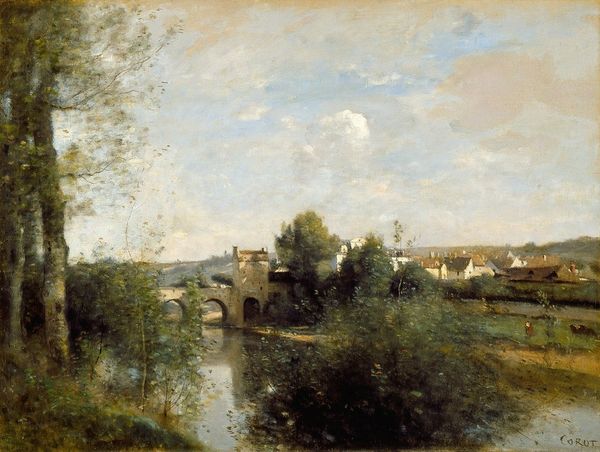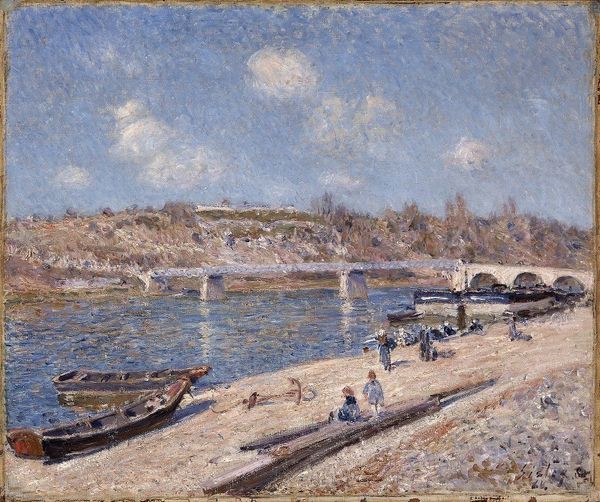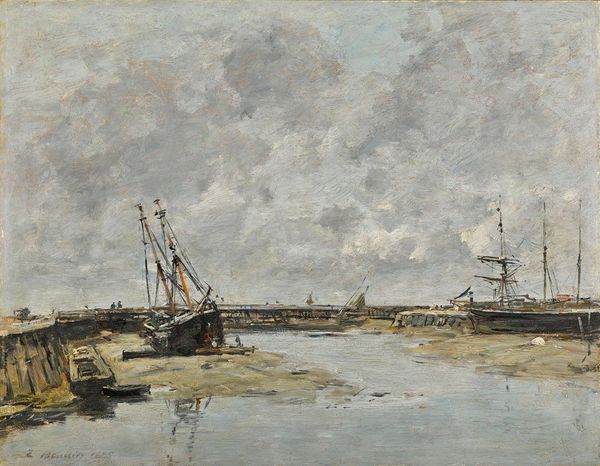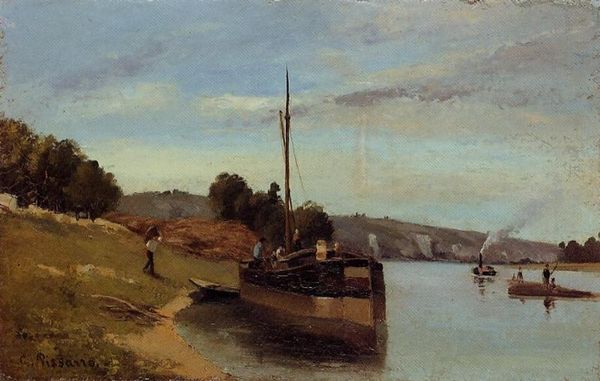
painting, plein-air, oil-paint
#
painting
#
impressionism
#
plein-air
#
oil-paint
#
landscape
#
oil painting
#
water
Copyright: Public domain
Editor: Alfred Sisley's "Fishermen Mending Nets," painted in 1872. It's lovely, the way he captures the light reflecting off the water. What particularly strikes me is the contrast between the delicate nets and the implied labor of maintaining them. What do you see in this piece? Curator: What stands out is Sisley's almost documentary approach to depicting the fishing industry at this particular location in time. Oil paint captures not just a scene, but also the specific tools, materials and techniques utilized by working-class fishermen. How does this focus shift our interpretation of landscape painting as a genre, typically focused on upper class leisure? Editor: That's interesting. I hadn't thought about it that way. So, the very *act* of mending these nets – the labor itself - becomes part of the subject matter? Curator: Precisely. Think about the availability of paint at the time, who has access to these colors and materials, and how plein-air techniques enabled painting these working-class environments. We are not merely looking at a pretty picture, but also a visual record of material culture and the means of its production. Consider the networks these fishermen participated in, the economies affected by the fruits (or fish) of their labor. It asks us to re-evaluate artistic hierarchies. Editor: So by emphasizing the tools and the labor involved, Sisley challenges the traditional idea of Impressionism as purely focused on capturing fleeting moments of beauty? Curator: Exactly. It forces us to question where the beauty truly lies. Is it only in the surface appearance, or also in the story of production and material engagement embedded within the image? How consumption and materiality change society's understanding of art and work. Editor: I see. I hadn't considered the painting in terms of its social context and the economics of art making. It adds a whole new layer of meaning. Thanks! Curator: And, hopefully, it encourages us to always consider the material underpinnings of art, not just the aesthetic surface.
Comments
No comments
Be the first to comment and join the conversation on the ultimate creative platform.
